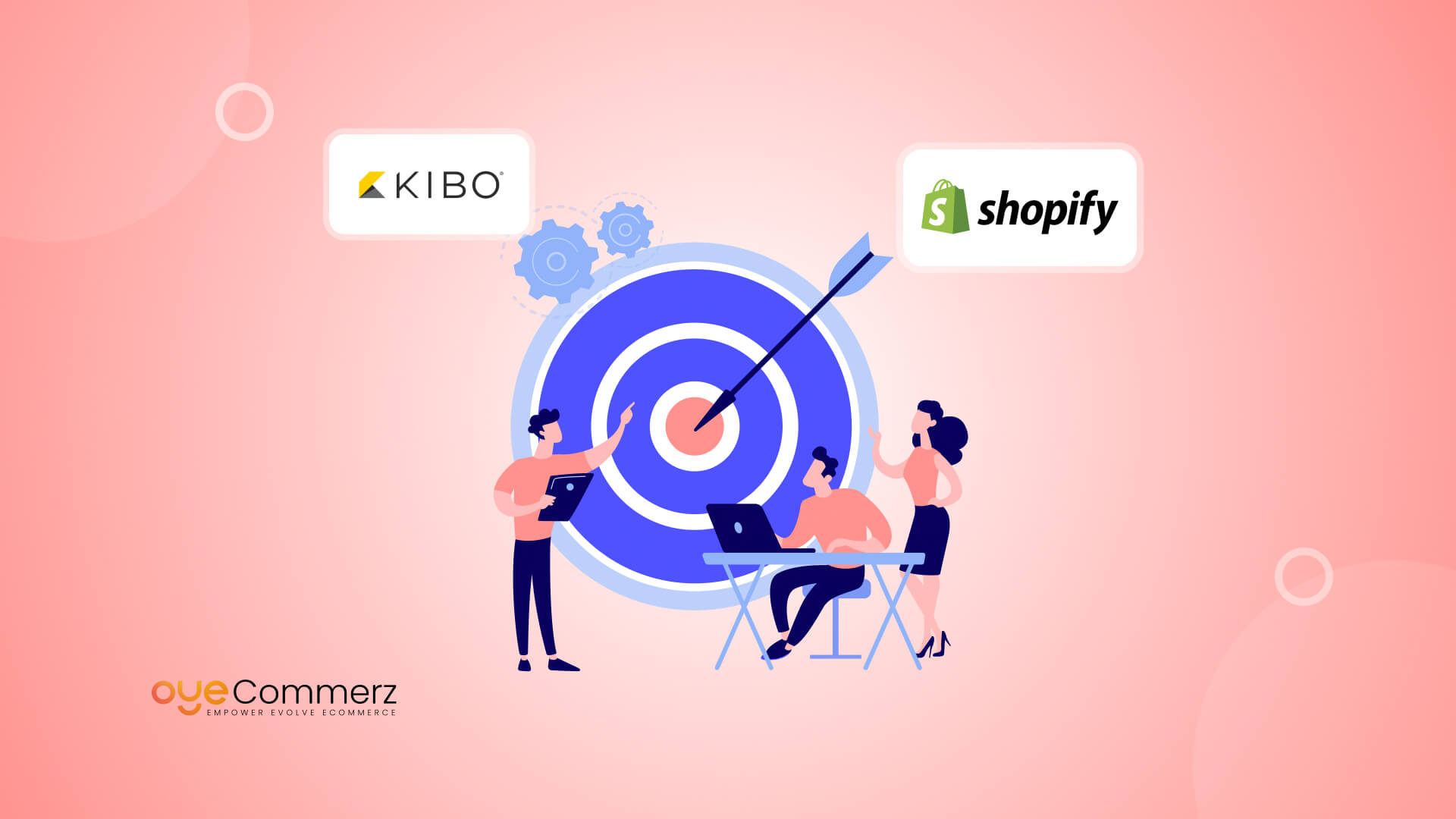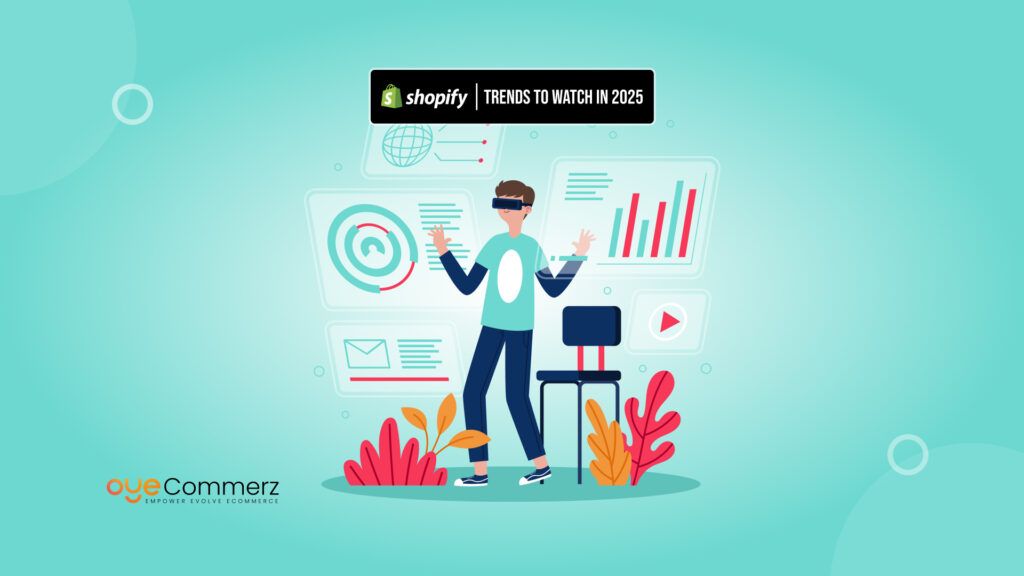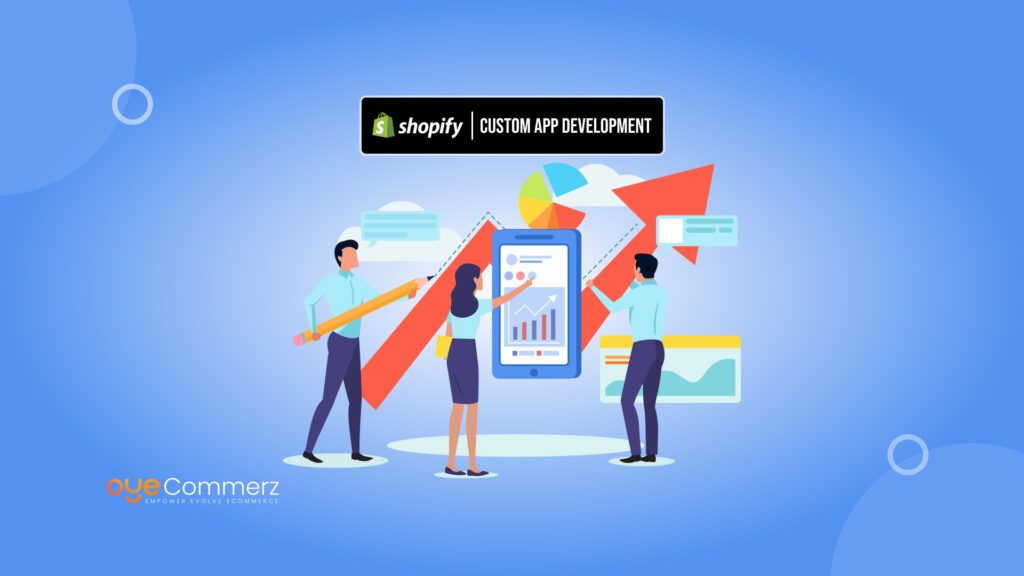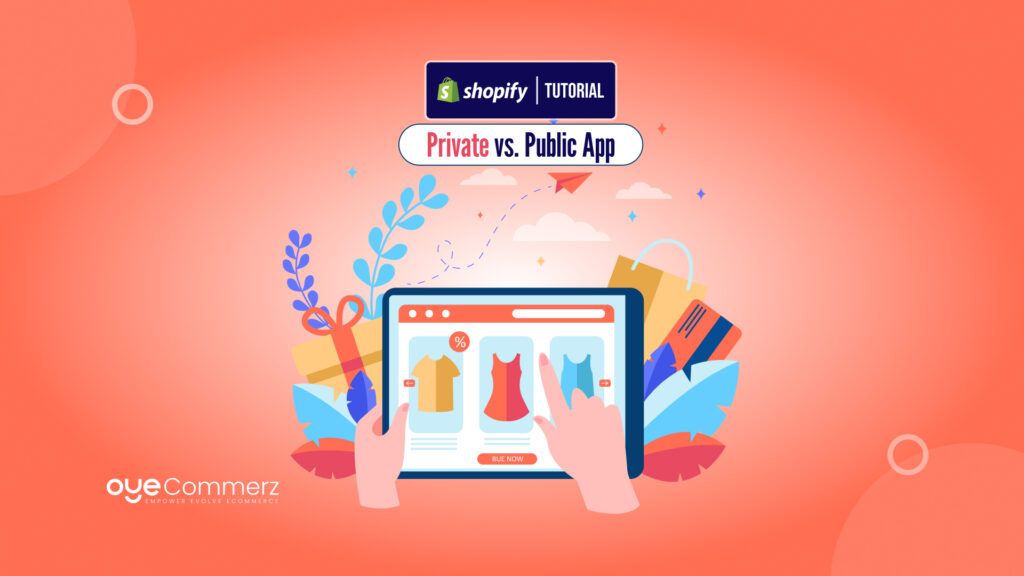Are you a existing business owner feeling stuck with Kibo and looking for a better way to grow your online store? Managing a business on Kibo can sometimes feel overwhelming, especially when it comes to customization and scaling. The good news is that switching platforms doesn’t have to be a headache. In fact, businesses that transition to Shopify often experience up to a 45% increase in operational efficiency. This guide will walk you through successful strategies for Kibo to Shopify migration, helping you unlock the full potential of your e-commerce business with ease. Let’s get started!
Table of Contents
ToggleWhy We Need Strategies for Migration?
Migrating from Kibo to Shopify is a significant transition that can impact every aspect of your eCommerce business, from operational efficiency to customer experience and online visibility. Without a clear and well-defined migration strategy, businesses risk facing several challenges that could disrupt their growth and cause operational setbacks. Here’s why having a solid strategy is essential for a successful migration:
1. Avoiding Operational Downtime
One of the biggest risks during migration is extended downtime, where your store might be unavailable or partially functional. This can result in lost sales, frustrated customers, and damage to your brand reputation. A migration strategy ensures that your store remains operational during the transition, with minimal disruptions to sales and service. By planning and testing the migration steps ahead of time, businesses can ensure a smoother process with little to no downtime.
2. Maintaining Data Integrity
Migrating from Kibo to Shopify involves transferring crucial data such as customer profiles, order histories, product information, and inventory details. Without a strategy, there’s a risk of data corruption, loss, or misalignment. A well-planned approach to data migration ensures that all information is accurately transferred, preserving its integrity and preventing errors that could affect your business operations or customer satisfaction. This includes proper mapping of product categories, attributes, and other data structures between the two platforms.
3. Preserving SEO Rankings
SEO is a vital component of eCommerce success. When migrating from Kibo to Shopify, improper handling of URLs, metadata, or product pages can lead to a drop in search engine rankings, which in turn could negatively affect organic traffic and sales. A migration strategy ensures that all SEO elements, including URL redirects, meta tags, and product descriptions, are carefully mapped and transferred to Shopify, maintaining search engine visibility and ensuring that your site retains its ranking during and after the migration.
4. Ensuring a Smooth User Experience
Migration isn’t just about moving data from one platform to another; it’s also about providing your customers with a seamless experience on the new platform. If not executed well, the user interface (UI) and user experience (UX) of the new Shopify store may not meet expectations, causing customer frustration and potential abandonment. A strategic approach to the design and customization of your Shopify store ensures that the transition not only preserves your brand identity but also optimizes your store’s navigation, checkout process, and mobile responsiveness for a better user experience.
5. Optimizing for Post-Migration Success
A successful migration strategy doesn’t end when your Shopify store goes live. Post-migration, businesses need to monitor performance, ensure integrations are working correctly, and gather customer feedback to address any issues promptly. A migration plan includes post-launch activities like testing and optimization, helping businesses quickly resolve any lingering issues and ensuring that the store is fully operational and optimized for ongoing growth.
6. Supporting Long-Term Scalability
Shopify offers greater scalability than Kibo, with access to a vast range of apps and integrations that can help businesses expand and improve over time. A migration strategy ensures that the new store is set up for future growth, whether that’s by integrating third-party tools, adding new product lines, or improving marketing strategies. By considering future needs during the migration, businesses can avoid having to redo aspects of their setup down the line, ensuring that the store remains adaptable to growth and changing market conditions.
7. Reducing Risk and Cost of Errors
Without a strategy, businesses risk facing costly mistakes that could lead to errors in inventory management, customer service, or checkout. These mistakes could result in lost revenue, customer dissatisfaction, or compliance issues. By implementing a structured strategy, businesses can mitigate the risk of costly errors, save time, and ensure that all essential aspects of the migration are handled carefully and correctly.
Here are some successful strategies for Kibo to Shopify migration
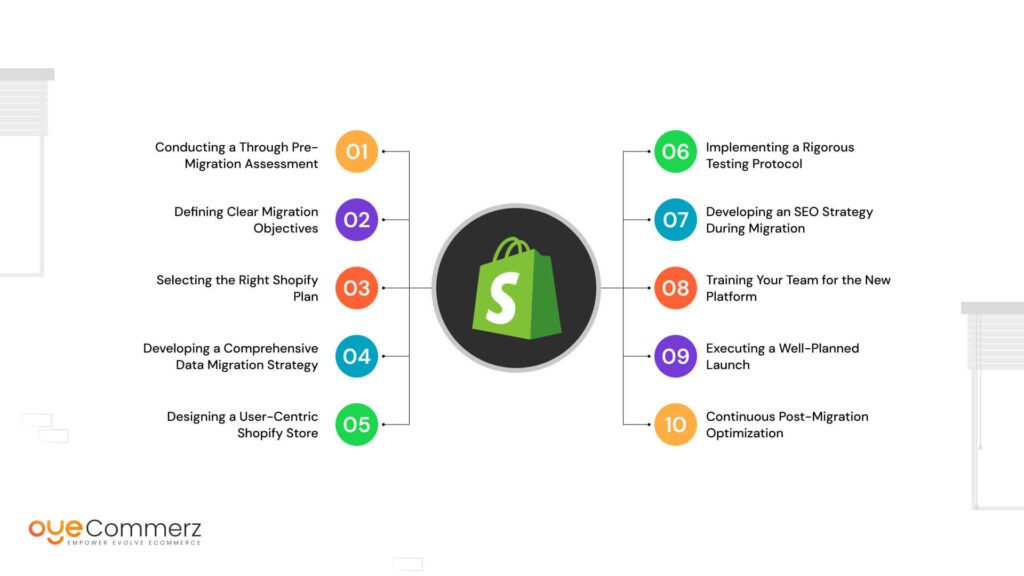
1. Conducting a Through Pre-Migration Assessment
Before embarking on a migration journey, a comprehensive pre-migration assessment is critical. This evaluation will identify the unique needs of your business and the potential challenges you may face during the transition.
Key Areas to Assess
- Current System Limitations: Identify the limitations of your existing Kibo setup that may hinder growth.
- Data Quality and Structure: Evaluate the quality of your existing data, including customer, product, and sales information.
- Integration Needs: Assess current integrations with third-party applications and identify necessary Shopify alternatives.
Expert Insight
According to David Tan, an e-commerce analyst, “A thorough pre-migration assessment lays the groundwork for a smooth transition, ensuring that critical business functions remain uninterrupted.”
Tools for Assessment
Utilize analytics tools and performance metrics from Kibo to gather data that will inform your migration strategy.
2. Defining Clear Migration Objectives
Setting clear objectives is crucial for steering the migration process and assessing its success, ensuring that these goals are in harmony with your overall business strategy.
Suggested Objectives
- Improve User Experience: Focus on enhancing navigation and reducing friction in the purchasing process.
- Increase Operational Efficiency: Streamline back-end processes to reduce costs and improve responsiveness.
- Drive Revenue Growth: Set specific revenue targets to achieve within the first year post-migration.
Supporting Statistics
A survey conducted by McKinsey found that “companies with clearly defined migration goals see a 50% higher success rate.” This statistic underscores the importance of strategic planning in achieving your migration objectives.
3. Selecting the Right Shopify Plan
Choosing the appropriate Shopify plan is crucial for maximizing your e-commerce capabilities. With options like Shopify Plus designed for enterprise needs, it’s essential to evaluate which plan aligns with your business requirements.
Factors to Consider
- Volume of Transactions: Assess your current and projected sales volumes to determine the most suitable plan.
- Required Features: Identify critical features, such as advanced reporting, customization options, and integration capabilities.
- Budget Constraints: Ensure that the chosen plan fits within your budget while still meeting all necessary requirements.
Expert Perspective
E-commerce strategist Lisa Morgan states, “The right Shopify plan can be the difference between a successful migration and one that falls short of expectations.”
4. Developing a Comprehensive Data Migration Strategy
Data migration is often the most complex aspect of the transition process. A detailed strategy is vital to ensure that data integrity is maintained throughout the migration.
Key Data Elements to Migrate
- Customer Information: Include profiles, order histories, and preferences to ensure a smooth transition for returning customers.
- Product Data: Migrate all relevant product details, including descriptions, images, and pricing.
- Order History: Retain past order data to provide customers with a comprehensive view of their purchasing history.
Best Practices for Data Migration
- Use Migration Tools: Employ specialized migration tools to facilitate the transfer of data from Kibo to Shopify.
- Conduct Test Migrations: Perform trial migrations to identify potential issues and correct them before the final migration.
- Validate Data Post-Migration: Ensure that all data is accurately transferred and accessible in Shopify.
5. Designing a User-Centric Shopify Store
The design of your Shopify store plays a crucial role in customer engagement and retention. A user-centric approach fosters higher conversion rates and enhances customer satisfaction.
Design Considerations
- Intuitive Navigation: Simplify the navigation process to make it easy for customers to find what they need.
- Mobile Responsiveness: Ensure that your store is fully optimized for mobile devices, as a significant portion of e-commerce traffic comes from mobile users.
- Brand Identity: Maintain consistent branding across your store to enhance recognition and trust.
Expert Opinion
Design expert Rachel Simmons emphasizes, “A user-friendly design is essential for keeping customers engaged and encouraging them to complete their purchases.”
6. Implementing a Rigorous Testing Protocol
Before launching your new Shopify store, it’s crucial to implement a rigorous testing protocol. This ensures that all functionalities work correctly and provides a positive experience for users.
Testing Components
- Functionality Testing: Verify that all features, including payment gateways and shipping options, are operational.
- User Acceptance Testing (UAT): Engage real users to test the site and provide feedback on their experiences.
- Performance Testing: Monitor site speed and responsiveness under different conditions to ensure optimal performance.
Industry Data
Harward Research Reviews that “businesses that invest in thorough pre-launch testing experience a 30% reduction in post-launch issues and gets failed.”
7. Developing an SEO Strategy During Migration
SEO should be a central focus during the migration process to maintain your search engine visibility. A well-crafted SEO strategy can help improve your rankings and drive organic traffic to your new store.
Essential SEO Tactics
- 301 Redirects: Implement 301 redirects from Kibo URLs to their corresponding Shopify URLs to maintain SEO rankings and ensure a seamless user experience.
- Optimize Metadata: Ensure that all product pages feature optimized meta titles and descriptions.
- Content Update: Revise and refresh existing content to align with best SEO practices, including keyword integration.
Expert Insights
SEO consultant Mike Roberts states, “Migrating to Shopify is an excellent opportunity to refine your SEO strategy and improve your online visibility.”
8. Training Your Team for the New Platform
Ensuring your team is well-trained on the new Shopify platform is vital for maximizing productivity and maintaining service quality.
Effective Training Strategies
- Hands-On Workshops: Conduct workshops to provide hands-on experience with Shopify’s features.
- Resource Creation: Develop user-friendly guides and documentation for ongoing reference.
- Continuous Support: Create channels for continuous support to effectively address any challenges that arise after migration.
Industry Feedback
Training expert Laura Bell emphasizes, “Investing in comprehensive training ensures that your team feels confident and competent in using the new system.”
9. Executing a Well-Planned Launch
The launch of your Shopify store marks the culmination of your migration efforts. A well-planned launch can generate excitement and drive initial traffic.
Launch Checklist
- Final Data Verification: Confirm that all data is accurate and fully functional in the new environment.
- Marketing Campaign: Develop a marketing strategy to promote the launch, utilizing email, social media, and paid advertising.
- Monitoring Setup: Implement analytics tools to track performance and user behavior immediately after launch.
Expert Advice
E-commerce strategist Anna Thompson highlights, “A coordinated launch can create buzz and drive traffic, setting the stage for ongoing success.”
10. Continuous Post-Migration Optimization
Post-launch, ongoing optimization is crucial for sustained success. The e-commerce market is constantly inovating, requiring businesses to shifting trends and change in consumer behaviours.
Optimization Strategies
- Performance Monitoring: Consistently analyze sales data and customer feedback to check areas for improvement.
- A/B Testing: Conduct A/B tests on various aspects of your store, such as layouts and marketing messages, to enhance performance.
- Utilizing Customer Insights: Leverage customer feedback to inform product offerings and marketing strategies.
Future-Proofing Your Business
Investing in continuous optimization ensures that your business remains competitive and responsive to market changes.
To facilitate a smooth transition, consider partnering with a specialized agency like Oyecommerz for comprehensive insights on the migration process.
Make Your E-commerce Experience Seamless with Oyecommerz!
Ready to implement successful migration strategies from Kibo to Shopify? Our expert team is committed to ensuring a smooth and seamless transition for your business, optimizing performance and scalability.
Reach out to us today to discover how we can support you through every step of the process and help unlock your store’s full potential!
Contact to Migrate your Site to Shopify Now
Conclusion
Migrating from Kibo to Shopify is not just a technical transition; it’s an opportunity to enhance your business’s operational efficiency and drive growth. By employing effective migration strategies from Kibo, enterprises can optimize their e-commerce capabilities and provide superior customer experiences.
From conducting thorough assessments to implementing rigorous testing protocols, each step of the migration process plays a crucial role in achieving successful outcomes. As you prepare to embark on this transformative journey, consider partnering with a specialized agency like Oyecommerz to facilitate a smooth migration and unlock the full potential of your new Shopify store.

